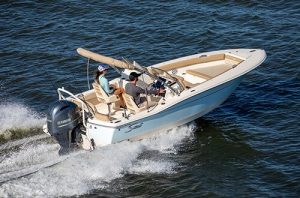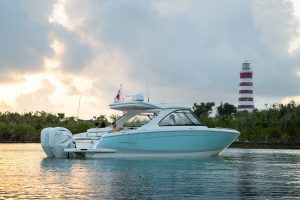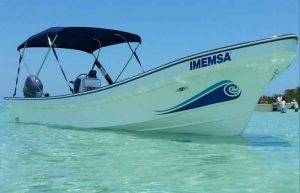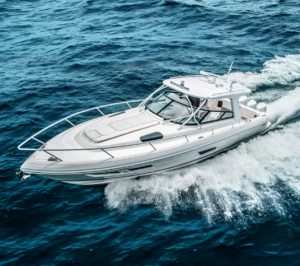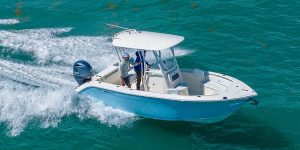Description
This 38 ft LOA Van de Stadt design incorporates an array of innovative concepts to produce a one-of-a-kind solidly-built aluminum passage maker, capable of crossing any ocean. This vessel was built in Australia and crossed the Pacific shortly after completion in 2008.
Built with safety top-of-mind, she features six water-tight compartments. This boat feels like a submarine below decks - but with natural light and good ventilation.
I like the cockpit / pilothouse arrangement above deck. It is built to offer full protection from sun, wind, rain, or boarding seas -- and has several opening windows and hatches for air flow and ventilation. The helm station is well-equipped with navigational electronics and system monitors. Both the main and jib are furling, and 29 lines lead to the cockpit for near-total control of the sails. Very solid, but removable, 36" aluminum rails run the perimeter of the deck.
This vessel is outfitted with numerous backup/failsafe systems for redundancy. For instance, charging the 1200+ amp hours of batteries is provided by solar panels, wind turbines (x2), shaft alternator, engine alternator, hydraulic alternator (x2), genset, or shore power. Two hydraulic pump units driven by the main engine provides hydraulic power throughout the boat for usual equipment – like the bow-thruster and windlasses. The hydraulics also power two 60 GPM pumps and an air compressor which are cleverly plumbed to de-water flooded compartments or to free the vessel if grounded via six keel jets. Additional information on these, and other unique systems are in the full listing.
This vessel was not built to be glamorous or luxurious, either inside or out. Instead, she’s built to be tough and self-sufficient -- like a Coast Guard cutter. Exposed frames, insulation, and plywood interior decking are offset by the elegant utility of this boat, and so many of her astoundingly impressive systems.
Many features were designed and installed for marine archaeological exploration and recovery (think Mel Fisher and the $400 million Atocha find). Four anchors allow for pinpoint anchoring – and preparations have been made to the rudder to allow for a prop wash deflector to be mounted for blowing away sediments / overburden.
Bottom line – if you are looking for an impressive and proven platform that can accomplish the extraordinary, then this just might be the boat for you.
These boat details are subject to contract.
Note: Offers on the asking price may be considered.
Visit our website for the full specifications of this boat with up to 100 photos, videos, and virtual reality images.
Accommodations
If boarding this vessel from the dock then you'll step aboard through an opening in the stout aluminum safety rails that are located amidships on the port or starboard sides. A few steps aft allows entry into the cockpit. The cockpit / pilothouse is constructed to provide good visibility and protection from the elements. In fair weather, several of the pilothouse windows can be opened to provide air flow and an opening hatch is installed overhead. The forward portion of the pilothouse roof / coachroof is of aluminum construction -- and the aft portion is configured with a canvas Bimini and sides. Solar panels are installed above the cockpit. The helm station is located in the aft cockpit. The helm station is configured with navigation electronics and instruments/gauges for monitoring the vessel's systems. 4 winches (one of which is electric) and running rigging routed to the cockpit provide near-total control from the cockpit while underway. The two position gimbaled helm chair provides seating for the skipper, and the bench seating in the cockpit will seat several crew, or provide a good lounging spot each to port and starboard. This is a livable space, and the sellers slept in the cockpit on their ocean crossing. A locking companionway door and sliding hatch opens to a ladder below decks. At the base of the ladder is a water-tight compartment that contains the nav station and the galley. Each door and cabin have numerous handholds for crew safety. The galley is located to port. A Force 10 two-burner LPG cooktop / range is located at the aft end of the galley (the propane locker near the cockpit holds a 9 gallon tank). An under-counter 12V Glacier Bay refrigerator / freezer are located forward of the range. The single basin stainless steel sink has faucets that are plumbed to pressurized potable water, manually pumped potable water, and manually pumped seawater -- and there are a number of drawers and cabinets for storing cooking utensils and provisions. To the starboard side of this compartment is the nav station. The chart table features a built-in seat, shelf, and file cabinets containing well organized systems manuals and cruising guides, charts, and nav tools. Navigational electronics are installed above the chart table. Outboard from the chart table is an electrical panel that offers an incredible degree of control and monitoring of the ship's electrical system. A watertight door with a large window separates the galley / nav area from the saloon. The saloon table will seat several people. The saloon seating doubles as single berths (one port, one starboard). There is an extensive amount of storage in this space for provisions or miscellaneous items, both inside the saloon table and behind the saloon seating. Potable water tanks are located below the saloon seating. Additionally, the house battery bank (840 amp hours) is located underneath the saloon table. Like all spaces, port lights and overhead hatches can be opened to provide ventilation. All interior and cockpit lights are combination white / red. Forward of the saloon is another watertight space - which can be used as a store room for larger items. Within this store-room the head is located to port, and can be accessed from this space through another watertight door. The head has a manual marine toilet and washbasin with a pull-out faucet for showering. The Wilcox Skipper II head discharges to an Electroscan waste treatment system, a USCG type I holding tank, and overboard. The forward cabin is another water-tight compartment, and contains an upholstered double-berth. A Northern Lights keel-cooled 5kw genset is located beneath this berth. An overhead hatch and port lights provide ventilation. The engine is located in a watertight compartment aft of the galley / nav area. A quarter-berth abuts either side of the engine. These quarter-berths might be able to sleep two each, but would more comfortably sleep one. The engine can be accessed on the sides from the quarter berths, or forward by opening the hatch to which the companionway ladder is mounted, or through a deck hatch in the cockpit.
Additional Equipment
Each compartment has a 12V electric bilge pump. A 60 GPM hydraulic Pacer pump is plumbed to intakes in each compartment for de-watering. A manual bilge pump in the cockpit is plumbed to a foot valve in each compartment, and provides another backup. In the event that the hull is breached the affected compartment(s) can be sealed off with water-tight doors. A hydraulically driven air compressor located in the lazarette can be used, in combination with existing piping, to direct air into the flooded space which would force seawater out (the same compressor can also be used for dinghy inflation). The air compressor can also be used in combination with the hydraulically driven Pacer 60 GPM discharge pump to direct high volumes of water and air from six 1.5" jets located at the bottom of the keel. This would under certain circumstances allow the vessel to unground herself by blowing away sediments and other material. The head door is an emergency rudder which can be mounted outboard and controlled from the cockpit. There is also an emergency tiller that can be fitted to the top of the rudder shaft under the helm seat. Lines can be led to aft winches if needed.
Sails Rigging
The aluminum mast is mounted in a tabernacle for lowering aft. The mast features oversized stainless steel rigging, mast steps, and is double wall at the tabernacle. Equipment to self-lower the mast is included. All sails are North Sails, with the exception of the riding sails. The extended stern booms provide a boom for the port and starboard riding sails. A pole on the forward end of the mast is used for flying the gennaker and lowering the mast.

